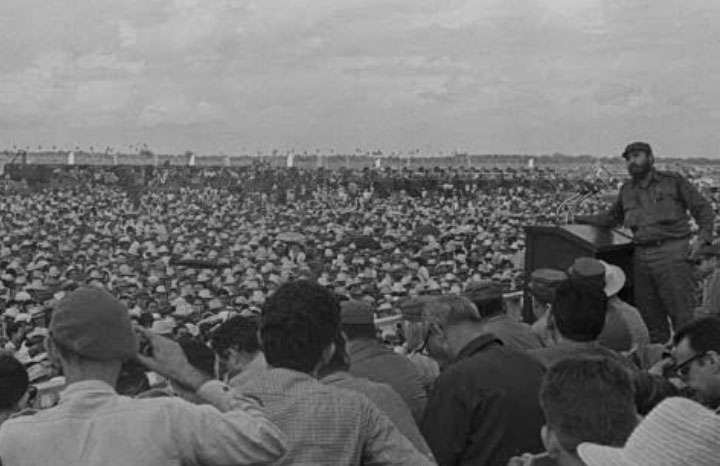
NUEVA GERONA, Cuba, August 12 (ACN) Fifty-eight years after that inaugural day, the promise of the Revolution's top leader lives on in the collective memory, namely to transform the then Isle of Pines—devastated by Hurricane Alma in 1966—into a renewed enclave bound to be a symbol of youth’s efforts and the push of the revolutionary project.
Young attendees have it that Commander in Chief Fidel Castro Ruz (1926-2016) spoke to the mobilized force, in a tone both reflective and challenging, in the conviction that they were inaugurating not only a work, but also an era and said that the new name, "Isle of Youth", was not yet fully justified but a collective goal to be achieved.
It wasn't criticism, but a wake-up call to turn the region into a laboratory of dreams where Cuban youth could forge the country's future.
As usual, Fidel combined technical data and philosophical reflections to give a master class in politics, science and revolutionary ethics to talk about global population growth, the challenge of feeding billions of human beings, and how only with a true revolution could such challenges be overcome.
His speech on August 12, 1967 transcended the mere inauguration of the Vietnam Heroico reservoir to become the first step towards local hydraulic self-sufficiency, a technological milestone in the use of natural resources, and a direct appeal to Cuban youth, politically committed to the development of the municipality.
The international context played a key role in the choice of the reservoir's name: the Vietnam War (1955–1975) was at its height, and Cuba reaffirmed its solidarity and internationalist vocation, linking its own transformation process with the liberation struggles of the peoples in the so-called Third World.
Isle of Pines, renamed Isle of Youth in 1978, was established as a space for concrete utopias, where collective effort and confidence in the future became the driving force of change.
Sidebar

 Agencia Cubana de Noticias
Líder en información nacional
Agencia Cubana de Noticias
Líder en información nacional








Nos reservamos el derecho de no publicar los comentario que incumplan con las normas de este sitio